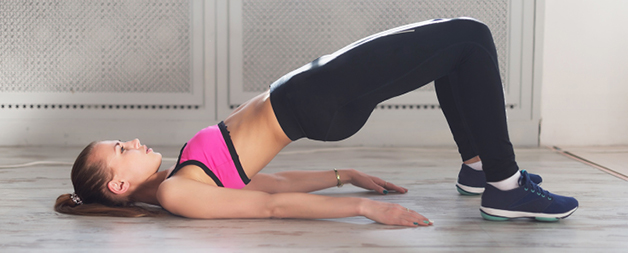
Staying active at home
Exercise brings great benefits to your health, both mentally and physically.
It’s no secret that countless studies have shown that regular physical activity can reduce the risk of and/or help manage type 2 diabetes and cardiovascular diseases, maintain and/or improve blood pressure, cholesterol and blood sugar levels, reduce the risk of some cancers, prevent unhealthy weight gain and assist with weight loss, improve bone and muscle strength and help to prevent and manage mental health problems. Pretty big list, even if right at this very moment for many of us, they’re not our focus right now.
Right now, of course, most of us are simply trying to work out what we can do day to day across all areas of our lives to keep things moving forward. Depending on what your usual routine used to look like, your exercise regime may need to look a little different, particularly now that we’re not able to access areas such as local gyms, sporting club training, swimming pools etc. If these were your usual places to go get some exercise done and to keep fit overall, this throws up some challenges for you.
Luckily, with some small adaptations to your space you have around your home, it is very possible to stay just as active as ever with limited equipment.
If you need any more motivation to keep yourself moving, research clearly shows that frequent participation in physical activity can improve your immune system. Specifically, after bouts of exercise where a heightened response to bacterial and viral antigens was found. The same research also highlighted that regular physical activity and frequent exercise might limit or delay ageing of the immune system, possibly preventing your body from frequently falling sick. This is because when you exercise, your heart rate increases and the heart pumps more blood around the body and promotes the movement of cells and substances of the immune system to carry out its job more efficiently when needed.
The best thing is – the main equipment you need is simply you and your own bodyweight. Bodyweight exercises are a great way to still stay active while being at home. There are many ways to use them for exercises, this includes circuit training and High-Intensity Interval Training (HIIT) and can be easily modified to be more challenging just with adjustments to the overall time and intensity.
List of Bodyweight Exercises:
- Cardio (slow jogging/ cycling/ brisk walking)
- Star jumps / High knees jumps / Squat Jumps
- Chair sit to stand / chair squats/squats
- Push-ups on kitchen bench/ 2 step height incline / on the floor
- Tricep dips on stable chair/ sofa / 2 step height incline
- Lunges stationary/ walking lunges
- Single-Leg Balance/ Tandem Balance/ Tandem Walking (add ball toss upwards to increase the difficulty
- Calf raises on level ground/ on edge of step with support/ single leg calf raises
- Standing/ Lying Hip Abduction
- Lying knee to elbow core twist
- Lying alternate heel touches
- Glute Bridges with arms by your side or across your chest
- Lying heel drops with core activation/ dead bug variations
- Leg extensions of all fours / Bird Dog variations
Ratio of Exercise to Rest (work:rest)
- 1:2 = 30 seconds on : 1 minute rest(low intensity/ beginner)
- 1:1 = 30 seconds on : 30 seconds rest (low-moderate intensity/amateur)
- 1.5 :1 = 1 minute 30 seconds on : 1 minute rest (moderate intensity/ intermediate)
- 2:1 = 1 minute on : 30 seconds rest (high intensity/ expert )
With the circuit, pick 6-10 exercises from the list above to complete one after the other with a ratio of your choice. Depending on the ratio, this can also become a HIIT training when the amount of rest is kept shorter than time completing the exercise.
For example, pick any 10 exercises with a phone timer or clock set to 12 minutes and complete each exercise for 30 seconds and have a rest for 30 seconds, then get onto the next exercise on the list before the 1-minute mark. Do these for 3 rounds and will give you at least 30 minutes.
It is highly recommended by the Department of Health and Exercise and Sport Science Australia (ESSA) that we aim for 30 minutes of exercise daily, or alternatively accumulate 150 minutes each week with a combination of cardiorespiratory, strength, flexibility and balance exercise.
However, if you have not been physically active in a while and looking forward to getting back into it, it is strongly recommended that you take 1 day of rest after every 2 consecutive days of exercise. This is to allow the body to rest and get accustomed to the exercises and to also reduce the presence of Delayed Onset of Muscle Soreness (DOMS). Remember to stay hydrated throughout this period as well.






Comments